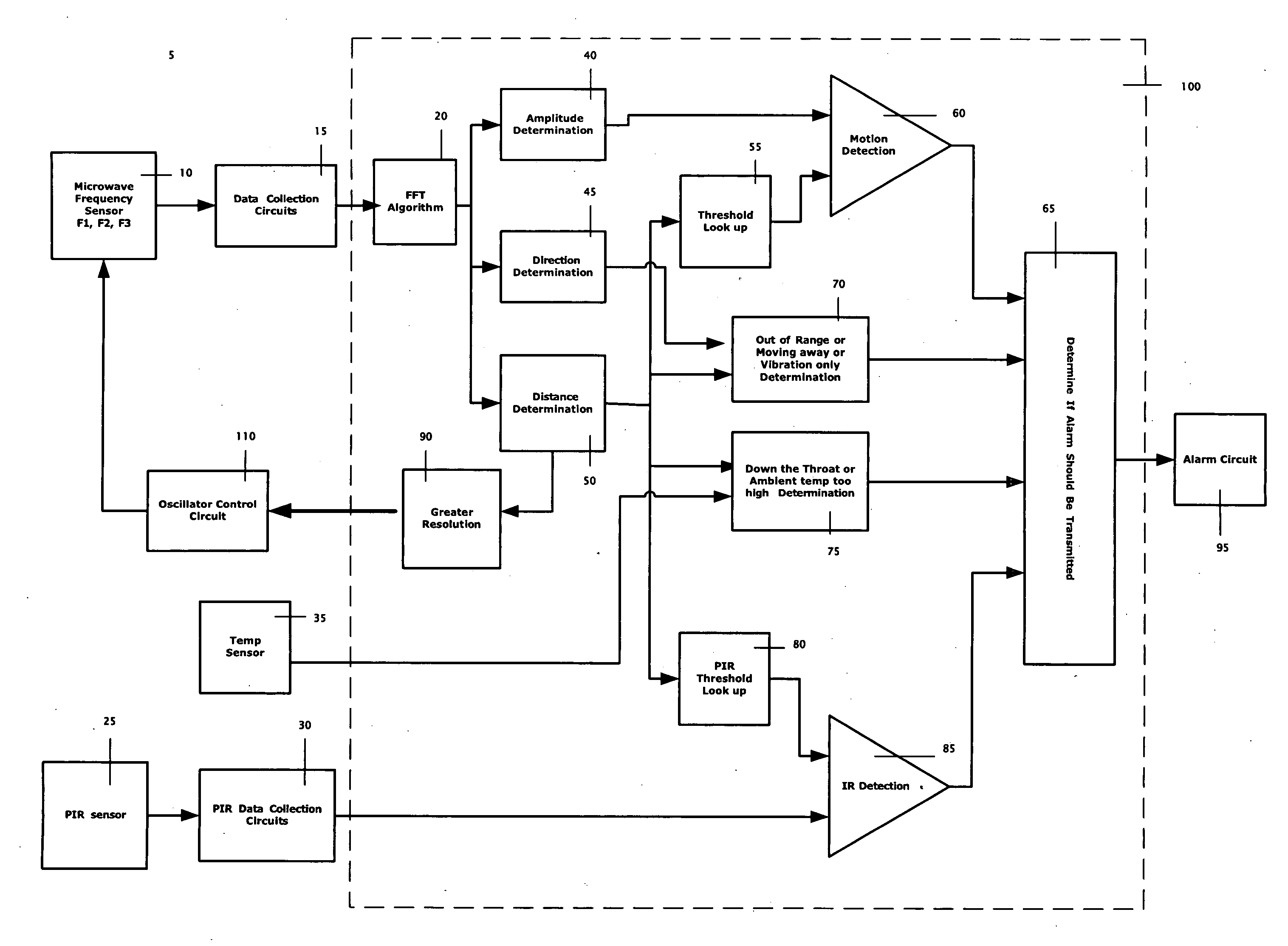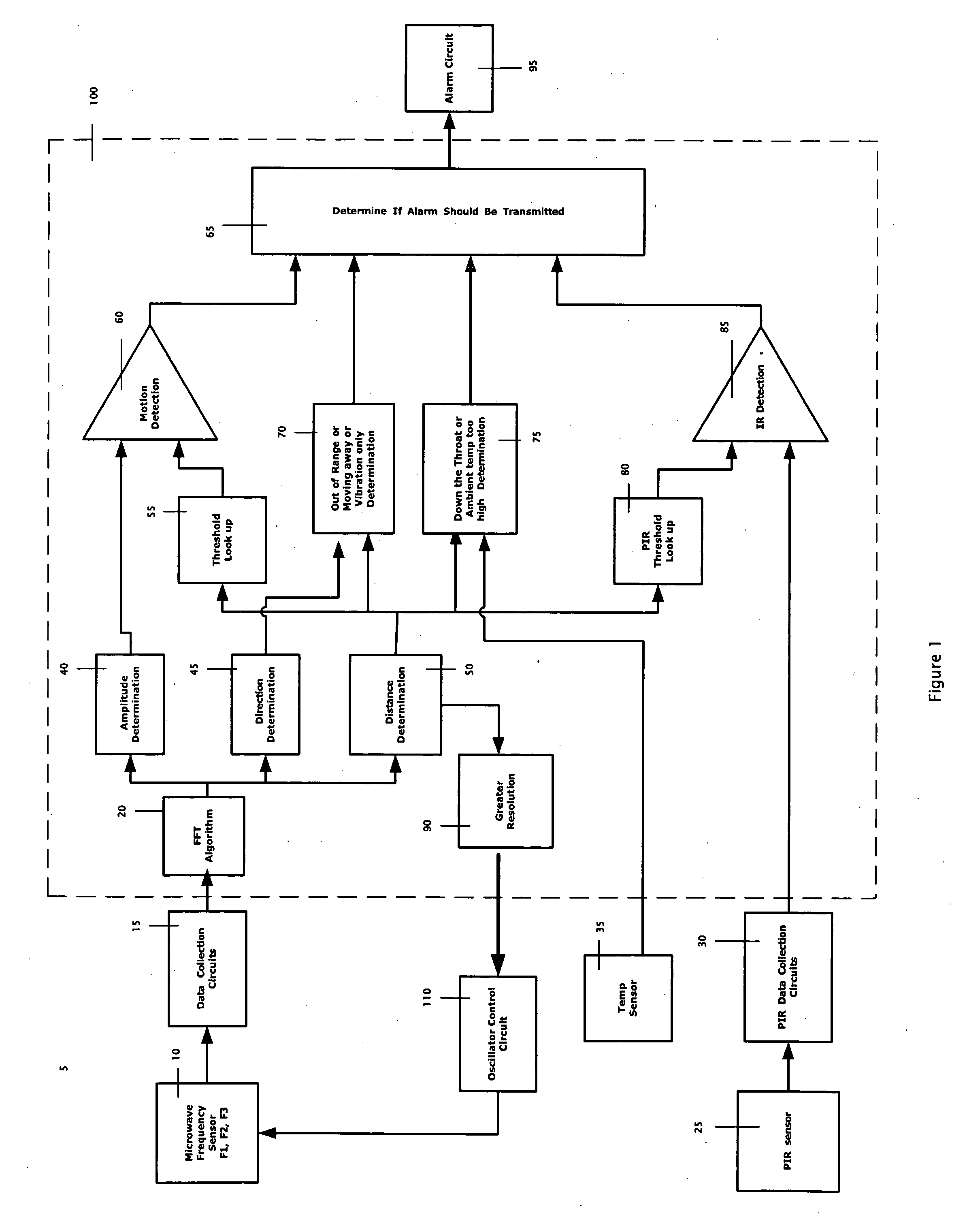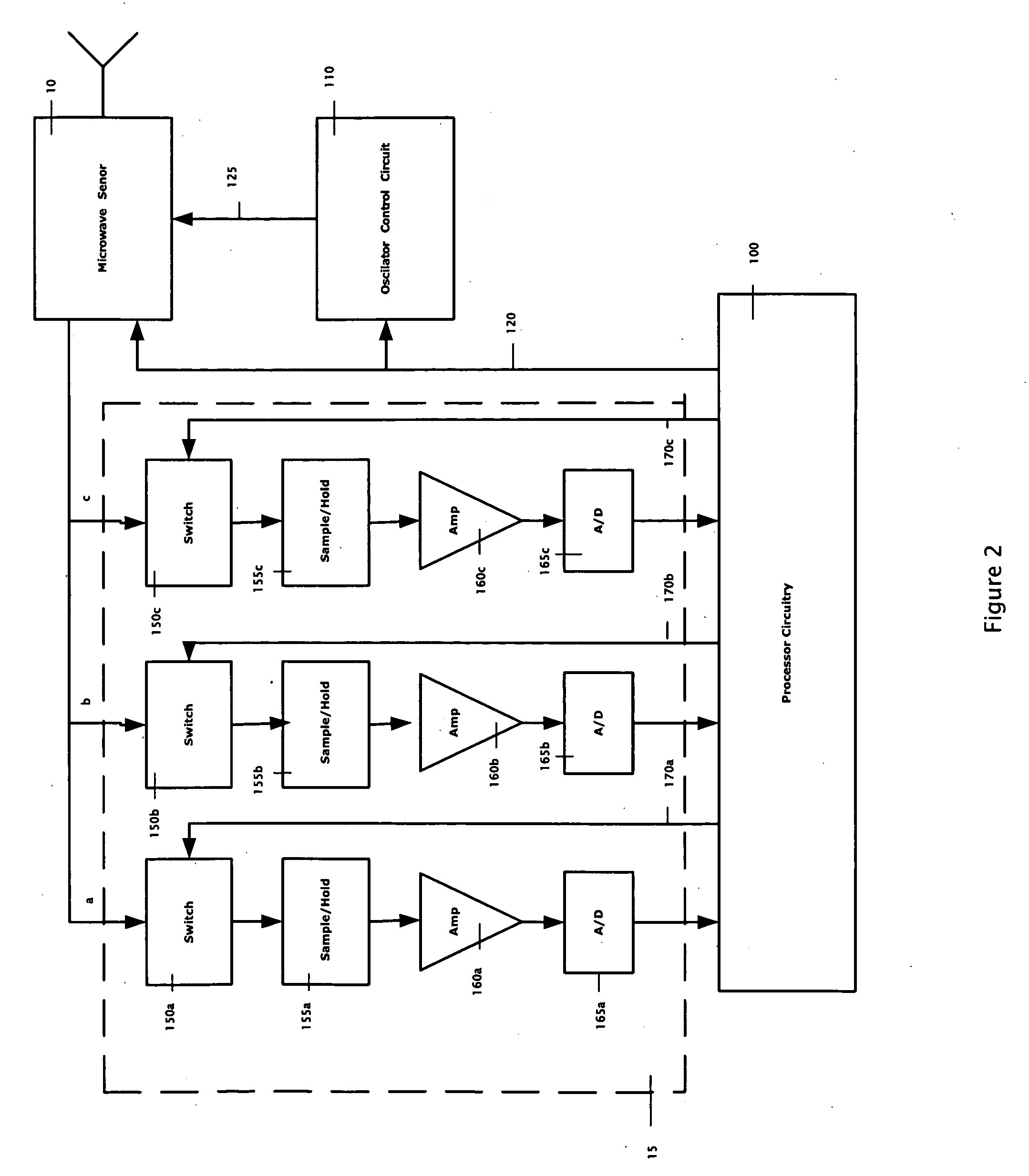Microwave ranging sensor
a microwave and sensor technology, applied in the field of security systems, can solve the problems of pet may trigger a false alarm, inherent weaknesses of the pir detector, and the combination of detectors does not improve the detection of intruders, so as to reliably detect intruders and accurate distance measurements
- Summary
- Abstract
- Description
- Claims
- Application Information
AI Technical Summary
Benefits of technology
Problems solved by technology
Method used
Image
Examples
Embodiment Construction
[0023]FIG. 1 is an illustration of the components and the processes that the motion detector 5 of the present invention uses to determine whether an intruder is present in a protected space. The components are the MW sensor 10, the data collection circuits 15, the PIR sensor 25, the PIR data collection circuits 30, the oscillator control circuit 110, the temperature sensor 35, the processor circuitry 100, and the alarm circuit 95. The oscillator control circuit 110, further described below, causes the MW sensor 10 to transmit three MW signals (F1, F2, and F3) that differ only slightly so that F2=F1+Δ1 and F3=F1+Δ2, where Δ11 and Δ21. In the preferred embodiment, the frequencies of the transmitted MW signals are initially set to cover the Maximum distance (minimum frequency difference such as few MHz). The MW sensor contains a MW receiver that receives reflected MW signals from a moving object in the protected space. The protected space is nominally a 35 ft room, but may be as large ...
PUM
 Login to View More
Login to View More Abstract
Description
Claims
Application Information
 Login to View More
Login to View More - R&D
- Intellectual Property
- Life Sciences
- Materials
- Tech Scout
- Unparalleled Data Quality
- Higher Quality Content
- 60% Fewer Hallucinations
Browse by: Latest US Patents, China's latest patents, Technical Efficacy Thesaurus, Application Domain, Technology Topic, Popular Technical Reports.
© 2025 PatSnap. All rights reserved.Legal|Privacy policy|Modern Slavery Act Transparency Statement|Sitemap|About US| Contact US: help@patsnap.com



